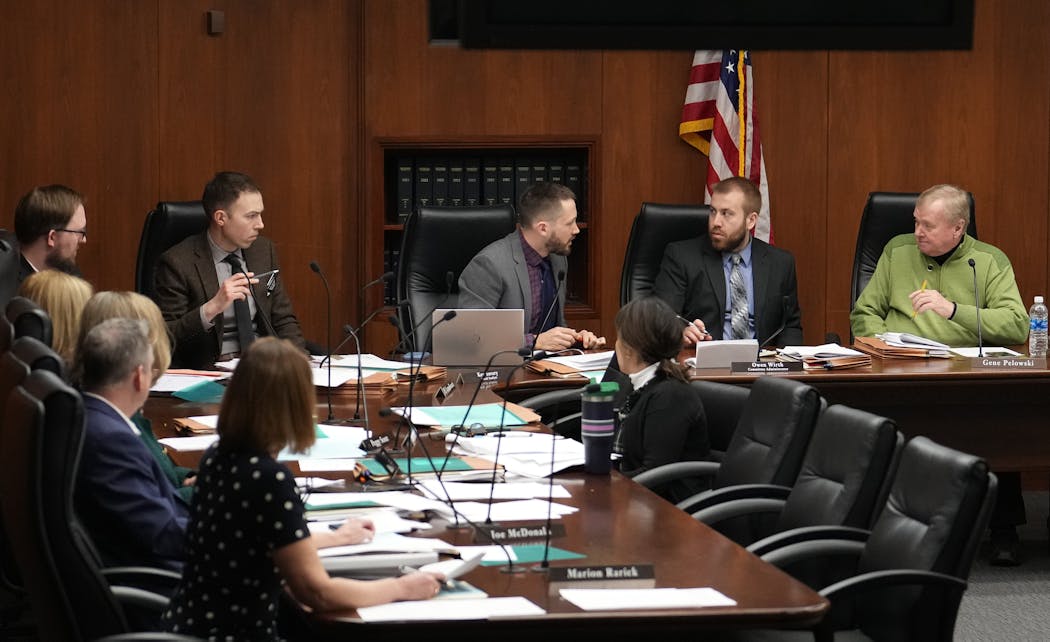Ace Goff doesn't know if she'll be able to go to college next year.
She's been relying on a state grant that helps former foster children pay their tuition and living costs — and she just found out the program is facing a $5 million shortfall.
Livid doesn't begin to describe how she's feeling.
"You shouldn't have promised us anything if you guys weren't 100 percent sure," she said.
Lawmakers celebrated the creation of the Fostering Independence Grant Program (FIG) three years ago, holding it up as a rare pandemic-era win that could help hundreds of the state's most vulnerable young residents improve their lives while reducing the long-term demand for social services.
"When they came forward and made their pitch, it just made sense to me," said Sen. Jason Rarick, R-Pine City, who sponsored the legislation that created the program. "When you took a step back and you realized what hurdles that all foster kids have to go through to make it to a postsecondary school, this was definitely something that needed to get done to assist them."
Between 12,000 and 16,500 Minnesota children experience some form of out-of-home or foster care each year. Some children were removed from their homes after officials found evidence of abuse or neglect. Others wound up there as part of agreements designed to help them access specialized treatment for disabilities or mental health concerns.
Only about half the nation's foster children graduate from high school and an even smaller portion — less than 10% — obtain college degrees, according to data from the National Foster Youth Institute.
State leaders said they tried to accurately predict the costs of the program, which receives about $4 million per year. Leaders in the state's Office of Higher Education predicted about 550 people would qualify for the new grants, based on information students had reported on the Free Application for Federal Student Aid, the document used to determine what assistance students should receive.
Those estimates initially held up, with 492 people receiving the grants in the first year. Then, demand for the program nearly doubled. Inflation drove up housing costs. For the first time in 14 years, enrollment at Minnesota colleges grew, squeezing other state aid programs and limiting officials' ability to shift money toward the foster grant program.
"It was a hard program to project out," said Adam Johnson, a state financial aid program administrator with the Office of Higher Education.
If current trends continue, the office estimates it will need an additional $5 million to meet the needs of 896 former foster children next school year.
Uncertainty and stress
In legislative hearings, leaders with the Office of Higher Education have tried to strike a balance, calling the increased interest a sign of the program's rapid success while driving home to lawmakers what might happen if they don't provide extra money.
"If the number of FIG recipients stays flat and additional funding is not available, we expect that 40 percent of students would be placed on a waitlist," state grant/state financial aid manager Meghan Flores told lawmakers in a hearing earlier this month. "This is not something that we would ever want to happen."
Even knowing that's a possibility sent students' stress rising.
Travis Matthews, student government president at Hamline University, knows what it's like to attend school with and without the grant. Without it, he worried about how he'd pay for housing and food. With it, he was able to take an internship and focus more on his studies. "You're moving past survivability to thriving," he said.
Matthews considers himself lucky. He'll graduate this year. He doesn't want other students to rely on luck.
"That is pennies at the Capitol," he said of the additional request. "There is no reason why we can't fund this."
Minnesota budgets on a two-year cycle and officials expect to spend about $70.5 billion this biennium. Lawmakers are scrambling to figure out how to respond to the FIG shortfall, noting this isn't a normal budgeting year. Gov. Tim Walz's office says he's "open to further conversations with the Legislature about ensuring it meets students' needs."
Rarick said they're looking at whether some recipients might qualify for housing assistance through a different program. If the state starts a waitlist, it will likely prioritize funding for those already in school, so their studies aren't disrupted. But Rarick hopes they'll find a solution that can at least get students through next school year and buy time to work on a longer-term solution.
"No matter what, we have to figure this out this year, so that we uphold our promise," he said. "I don't see any other way."
Returning to survival mode
Meanwhile, the Office of Higher Education is encouraging students to file their financial aid forms, noting that many former foster children are eligible for a variety of other programs that could cut college costs.
"This isn't the only scholarship that's available to them, and we want to make sure they're able to access it," said Keith Hovis, a spokesperson for the office.
Students are starting to go back into survival mode.
The grant allowed Nia Dyer, a junior at Minnesota State University Moorhead, to move into a safer living space. She dreads the thought of having to wonder whether she should buy 60 packets of ramen noodles to last a month.
Dyer wants to finish the bachelor's degree she needs to land a job in advocacy work.
"Knowing that it's in trouble and that it might go underfunded is terrifying, because I am one more year away from achieving my dream," she said.
Goff isn't ready to give up. She's in her third year at Metropolitan State University. Her ability to support her child and her dream of one day running homes that help foster youth both hang in the balance. So she's making trips to the Capitol to tell lawmakers of the stress from the uncertainty.
"This hit deep," she said. "You're playing with people's lives."

'Safe recovery sites' would offer syringes, naloxone and more to people using drugs. The plan could be in peril.
New Minnesota GOP leaders seek peace with party's anti-establishment wing

Who is Republican Lisa Demuth, Minnesota's first House speaker of color?




